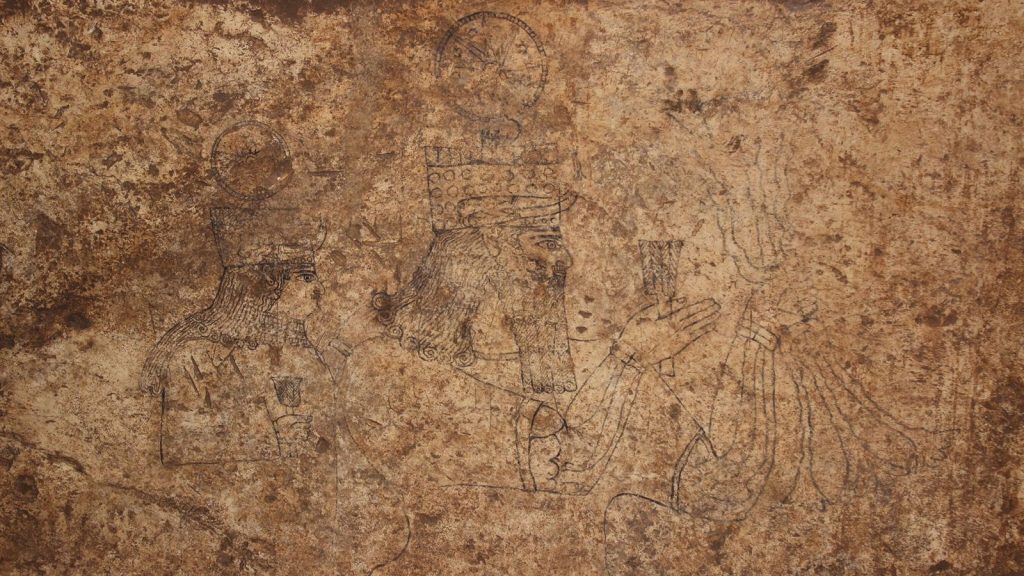Archaeology & History
Police Find Rare Assyrian Carvings of Gods in Underground Turkish Tunnels Long Used by Looters
Archaeologists will study them once the tunnels are reinforced.

Archaeologists will study them once the tunnels are reinforced.

Amah-Rose Abrams

A rare Assyrian carving depicting an unfinished scene of deities has been discovered in a network of secret underground tunnels in Başbük, Turkey. Initially discovered by police investigating a tunnel leading from a nearby house in 2017, it was only after the site had been raided by looters that archaeologists gained access to study the drawings.
It is thought that the looters discovered the tunnels when the house was built. They connected them to the property and were used to smuggle out antiquities.
The detailed carvings, thought to be around 3,000 years old, depict six gods, including Šamas, the sun god; Hadad, the Mesopotamian god of storms; Atargatis, the regional goddess of fertility; and Sîn, the moon god. This unusual melding of the conquering Assyrian and local Aramaic gods suggests a dialogue between the two ancient cultures, suggesting that perhaps the controlling Assyrian regime saw benefits to mixing cultures to obtain peace, or “soft power” as we would call it now.

Önal, M., Uludağ, C., Koyuncu, Y. and Adalı, S. F. 2022. An Assyrianised rock wall panel with figures at Başbük in south-eastern Turkey. Antiquity, 1-17.
“Assyrian anthropomorphic depictions of deities were rare before the time of Sennacherib at the start of the seventh century BC and were probably influenced by a northern Syrian Aramean tradition,” wrote Selim Ferruh Adali, associate professor of history at the Social Sciences University of Ankara, in a study on the carvings. “It is this Syrian Aramean milieu, also confirmed by Aramaic inscriptions naming leading Aramean deities that seems the most likely context for the subterranean rock wall panel at Başbük depicting a divine procession led by the Aramean god Hadad, his consort ’Attar‘ata and Sîn of Harran.”
The rare discovery raises questions about politics in the region under the Assyrian Empire, and whether the dominant Assyrians were taking a potentially softer approach to ruling than previously thought.
“By illustrating a local cohabitation and symbiosis of the Assyrians and the Arameans in a region and period under firm Assyrian imperial control, the Başbük panel gives scholars studying the imperial peripheries a striking example of regional values in the exercise of imperial power expressed through monumental art,” read the study.
The area is currently off limits to archaeologists and researchers as the tunnels are being reinforced. They will will be handed back over to experts once the area is made safe.